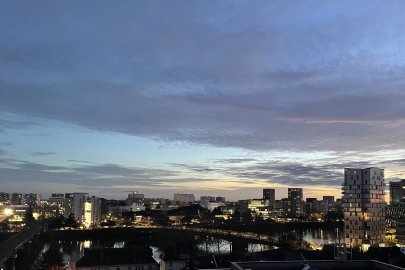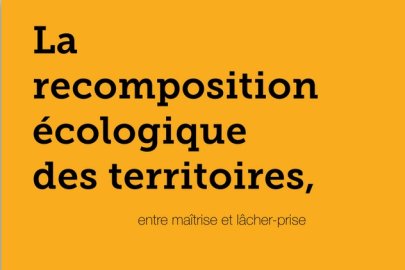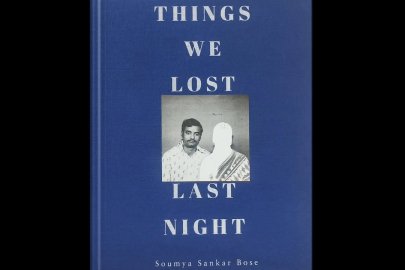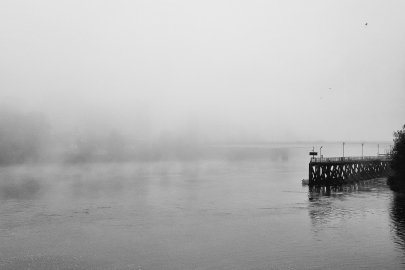In other people's homes. Germany-Poland, 1945: appropriation, cohabitation.
Thomas Serrier
Semantic reversals are always fascinating: they lead us to re-examine an object of research, at the same time as questioning the relevance and contours of the new paradigm.

The current example is ‘cultural appropriation’. It's not too hard to see that the contemporary use of this concept, which refers to the use of artefacts from another culture by members of a different - by which we mean dominant - culture, has recently taken on a stigmatising, even forbidding tone, in the context of the postcolonial debate. This new, essentially polemical meaning, expressed in the reciprocal accusations levelled at ‘cancel culture’, can only come as a surprise to a specialist trained in an entirely different configuration of debates. I am referring to the historical debates that flourished in Central Europe, and particularly in the German-Polish historiographical field, in the 1990s, after the fall of Communism and the opening up of borders. The context, fostered by a Zeitgeist open to intercultural dialogue and transnational scientific cooperation, was conducive to a common critique of the collective ‘grand narratives’ developed on either side of the great dividing line between memory cultures constituted by the ‘Iron Curtain’. Themes that had been buried or grossly distorted by the ideologies of the Cold War - the famous ‘taboos of history’ - made a comeback, raising questions that were often painful because they called into question certain deeply rooted myths, such as the myth of innocence (contradicted in reality by the crimes of Communism, the reality of collaboration and forms of local participation in the Shoah and in the ethnic cleansings).
The traumatic chapter of the violent expulsion of the German population and, as a long-term issue, the relationship of the Polish inhabitants to the multicultural heritage of their new ‘small homelands’, in the gigantic territories annexed to the north and west, figured prominently among these ‘rediscovered memories’. Let's not forget the age and importance of the Germanic imprint in these former eastern territories of the Empire, which were certainly multi-ethnic but clearly German-dominated, such as East Prussia, Silesia and Pomerania until 1945; and also the weight of numbers. In the maelstrom of forced post-war migration across Central and Eastern Europe, Germans from Central Europe made up by far the largest contingent. Counting the Reichsdeutsche - inhabitants of the Reich - settled in the eastern provinces, in Königsberg, Tilsitt or Breslau, and the Volksdeutsche - ethnic Germans, settled outside the borders (Sudetenland, Baltic, Galicia, Transylvania, Volga, etc.), since the Middle Ages or the Second World War, the Germans of Central and Eastern Europe were the largest contingent. ), since the Middle Ages or modern times, there have been at least 12 million uprooted people, replaced in the new western territories of Poland, east of the Oder and Neisse rivers, by 4 million Poles who settled, or were settled, in the homes of Germans. From the point of view of research, the relationship with the foreign housing ‘recovered’ in 1945 in the ravaged towns and devastated countryside posed a range of questions, from legal aspects to social and cultural practices: the use of movable and immovable heritage, respect for heritage, the symbolism of belonging. How had the towns of Danzig, Stettin, Breslau become Gdańsk, Szczecin, Wrocław? And how had their post-war Polish inhabitants familiarised themselves with their new surroundings to the point of feeling at home there (usually from the second generation onwards)? This is a fundamentally anthropological question, encompassing not only material appropriation, but also ‘cultural’ and symbolic appropriation of ‘cultural landscapes’ marked by an alien, hostile imprint. Between research into extreme violence, investigations into the ‘blanks’ of memory, and the new paradigm of German-Polish ‘cultural transfers’ (Karol Sauerland), the social practices subsumed under the terms kulturelle Aneignung/kulturowe zawłaszczenie are not then automatically decried. The effort to define and analyse focuses on the typological difference between an appropriation that negates the Other - characterised by utilitarian and immediate use, the importance of vandalism, gestures of symbolic ‘degermanisation’ (Bernard Linek), unauthorised, or ordered by the authorities, which dominated in the first post-war decades -, and an ‘open’ appropriation based on multiculturalism and the gradual ‘recognition’ of the Other - another key notion of the 1990s (Taylor, Honneth, Ricoeur). The Poles of the ‘formerly German’ (poniemieckie) territories of the West were encouraged, in parallel with the ongoing German-Polish rapprochement, to see themselves as the true ‘co-heirs’ (Robert Traba) of a ‘shared European heritage’ (Andrzej Tomaszewski), as the philosopher and anti-communist dissident Jan Józef Lipski had called for in a pioneering essay in the 1980s. It was up to them to take the initiative in co-defining an ‘open regionalism’ (Traba) with the former communities that had disappeared (Germans, Jews), based on a plural knowledge of the past and a shared assumption of present responsibilities.
Is it any wonder that literature, from the poets Adam Zagajewski (Breslau/Wrocław) and Kazimierz Brakoniecki (Allenstein/Olsztyn) to the 2018 Nobel Prize-winning novelist Olga Tokarczuk (Upper Silesia), via the Danzig-Gdańsk authors Paweł Huelle and Stefan Chwin has made a major contribution to this mental appropriation of landscapes populated by ruins and ghosts? 'Geo-narratives’ seem to be essential to this revitalisation, giving meaning to the ways in which a place is inhabited - 'geo-narratives' that Béatrice von Hirschhausen defines as 'a plot of the history of a society, incorporating its spatial dimension [...] [which] ties the space of experience (even in its geographical dimension) to the horizons of expectation of a social group' (Les provinces du temps. Frontières fantômes et expériences de l'histoire, CNRS éditions, 2023, p. 246). So let's conclude with another geographer: ‘To inhabit,’ writes Olivier Lazzarotti in Habiter le monde (Documentation française, 2014, p.11), ‘is not just to practice. It also means finding the words, images and sounds as well as the representations and unconsciousness of all kinds that accompany these practices'. In the countless ‘post-multicultural’ spaces of Europe (Yuri Androukhovich), marked by the complete disappearance of communities and the erasure of traces of their cultures, recognition of the repressed plurality of heritages seemed to open up a breach for the future. Existential issues, between memory of places and places of memory, between spaces of experience and horizons of expectation, subject to sometimes divergent views. Hence the tenacious opposition of the usual supporters of chauvinism, embodied by the PiS in the Poland of 2000 and 2010, to this symbolic reinstatement of a vanished cohabitation. This would represent a completely different type of ‘cultural appropriation’, one that is open and shared, far removed from the current anathemas.










